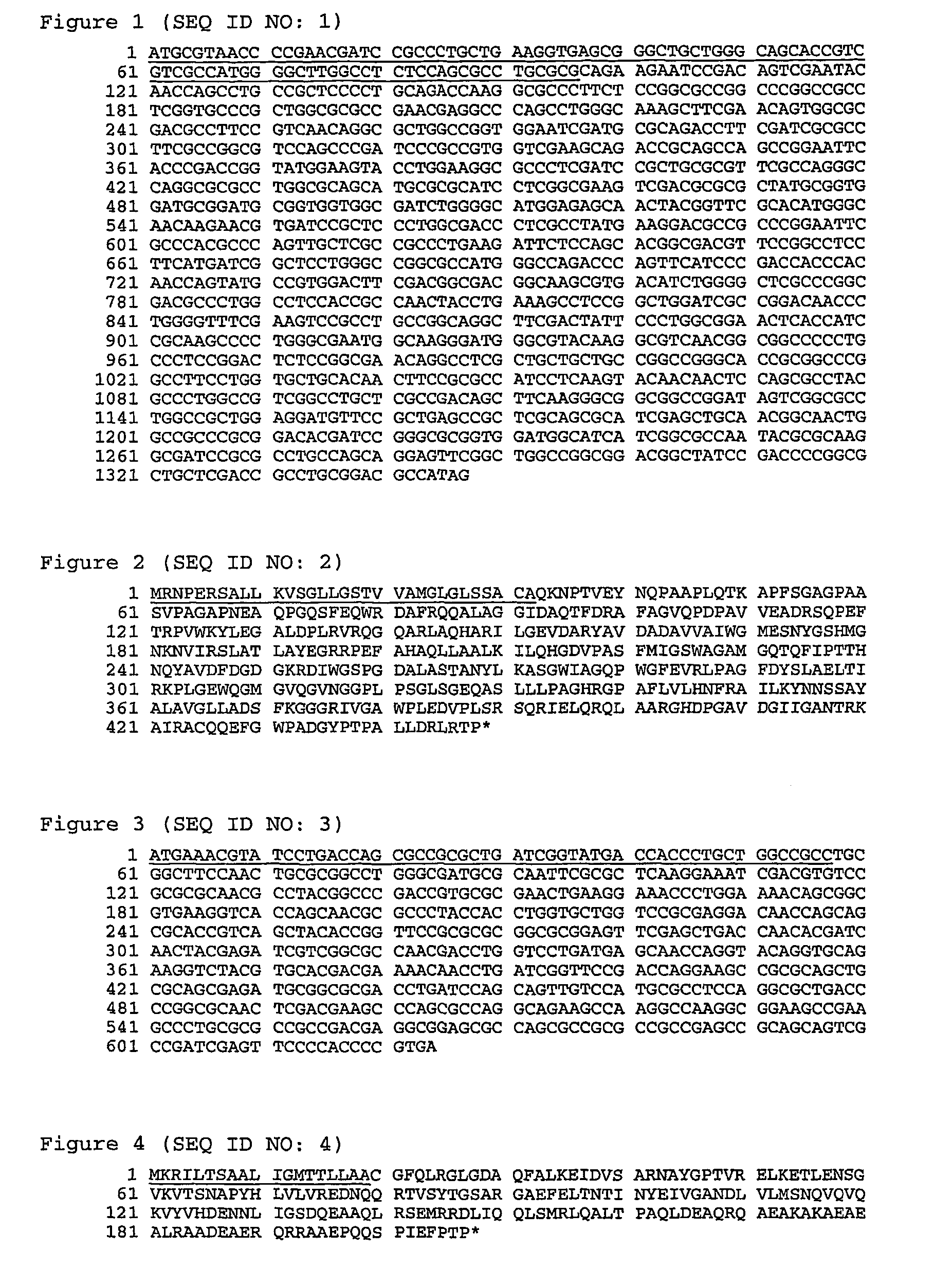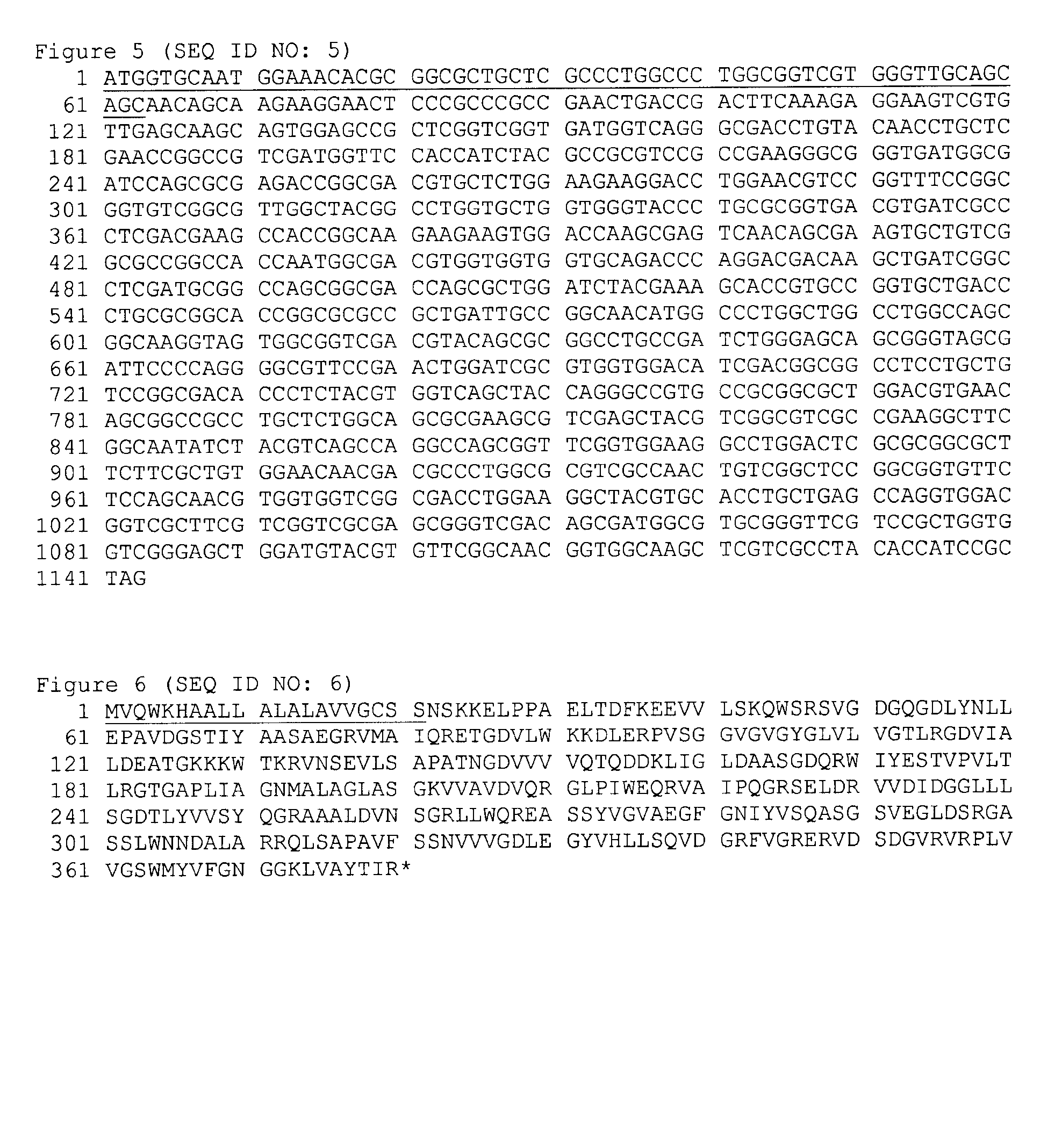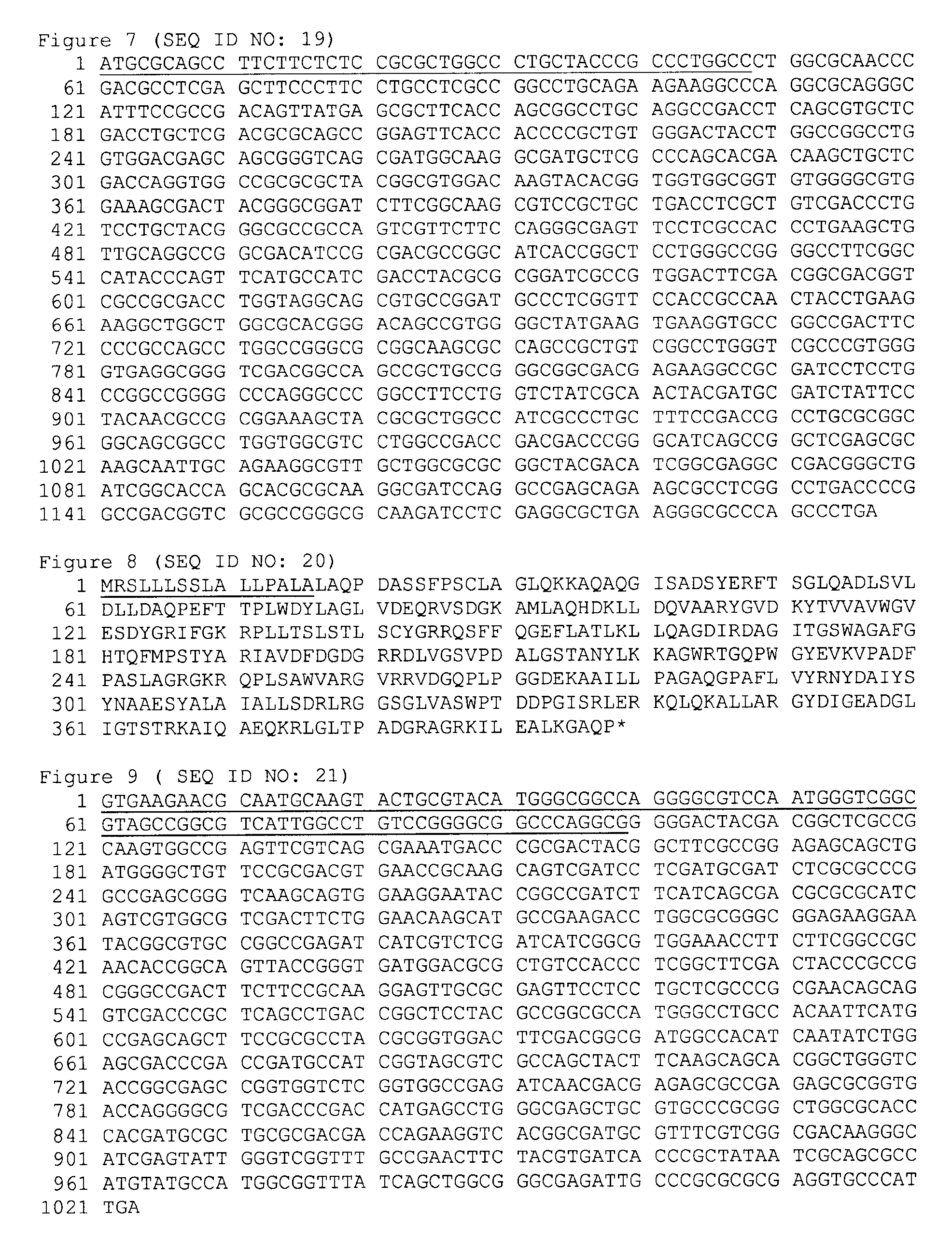Polypeptides of Pseudomonas aeruginosa
a technology of polypeptides and pseudomonas aeruginosa, which is applied in the field of polypeptides, can solve the problems of high death rate of burn units, increased illness and death, and many of these surface proteins are still not characterized
- Summary
- Abstract
- Description
- Claims
- Application Information
AI Technical Summary
Benefits of technology
Problems solved by technology
Method used
Image
Examples
example 1
[0210]This example illustrates the cloning and molecular characteristics of SPA-1 gene and corresponding polypeptide.
[0211]The coding region of P. aeruginosa SPA-1 (SEQ ID NO: 1) gene was amplified by PCP (Hybaid PCR Express, ESBE Scientific, Markham, Ontario, Canada) from genomic DNA of P. aeruginosa strain PAO1 using the following oligos that contained base extensions for the addition of restriction sites NdeI (CATATG) and NotI (GCGGCCGC): PSEU59 (5′-GGGAATTCCATATGGCGCAGAAGAATCCGACAGTCG-3′) (SEQ ID NO:7) and PSEU60 (5′-ATAAGAATGCGGCCGCTGGCGTCCGCAGGCGGT-3′) (SEQ ID NO:8). PCR products were purified from agarose gel using a QIAquick gel extraction kit following the manufacturer's instructions (Qiagen, Chatsworth, Calif.), and digested with NdeI and NotI (Amersham Pharmacia Biotech, Inc, Baie d'Urfé, Canada). The pET21b(+) vector (Novagen, Madison, Wis.) was digested with NdeI and NotI and purified from agarose gel using a QIAquick gel extraction kit (Qiagen). The NdeI-NotI PCR produ...
example 2
[0216]This example illustrates the cloning and molecular characteristics of SPA-2 gene and corresponding polypeptide.
[0217]The coding region of P. aeruginosa SPA-2 (SEQ ID NO: 3) gene was amplified by PCR (Hybaid PCR Express, ESBE Scientific) from genomic DNA of P. aeruginosa strain PAO1 using the following oligos that contained base extensions for the addition of restriction sites NdeI (CATATG) and HindIII (AAGCTT): PSEU47 and PSEU48, which are presented in Table 1. The methods used for cloning SPA-2 gene into an expression vector and sequencing are similar to the methods described in Example 1.
[0218]It was determined that the open reading frame (ORF) which codes for SPA-2 contains 624 bp and encodes a 207 amino acid residues polypeptide with a predicted pI of 5.04 and a predicted molecular mass of 22882.24 Da. Analysis of the predicted amino acid residues sequence (SEQ ID NO:4) using the Spscan software (Wisconsin Sequence Analysis Package; Genetics Computer Group) suggested the e...
example 3
[0220]This example illustrates the cloning and molecular characteristics of SPA-3 gene and corresponding polypeptide.
[0221]The coding region of P. aeruginosa SPA-3 (SEQ ID NO: 5) gene was amplified by PCR (Hybaid PCR Express, ESBE Scientific) from genomic DNA of P. aeruginosa strain PAO1 using the following oligos that contained base extensions for the addition of restriction sites NdeI (CATATG) and HindIII (AAGCTT): PSEU37 and PSEU38, which are presented in Table 1. The methods used for cloning SPA-3 gene into an expression vector and sequencing are similar to the methods described in Example 1.
[0222]It was determined that the open reading frame (ORF) which codes for SPA-3 contains 1143 bp and encodes a 380 amino acid residues polypeptide with a predicted pI of 5.15 and a predicted molecular mass of 40394.19 Da. Analysis of the predicted amino acid residues sequence (SEQ ID NO:6) using the Spscan software (Wisconsin Sequence Analysis Package; Genetics Computer Group) suggested the ...
PUM
| Property | Measurement | Unit |
|---|---|---|
| molecular mass | aaaaa | aaaaa |
| molecular mass | aaaaa | aaaaa |
| molecular mass | aaaaa | aaaaa |
Abstract
Description
Claims
Application Information
 Login to View More
Login to View More - R&D
- Intellectual Property
- Life Sciences
- Materials
- Tech Scout
- Unparalleled Data Quality
- Higher Quality Content
- 60% Fewer Hallucinations
Browse by: Latest US Patents, China's latest patents, Technical Efficacy Thesaurus, Application Domain, Technology Topic, Popular Technical Reports.
© 2025 PatSnap. All rights reserved.Legal|Privacy policy|Modern Slavery Act Transparency Statement|Sitemap|About US| Contact US: help@patsnap.com



